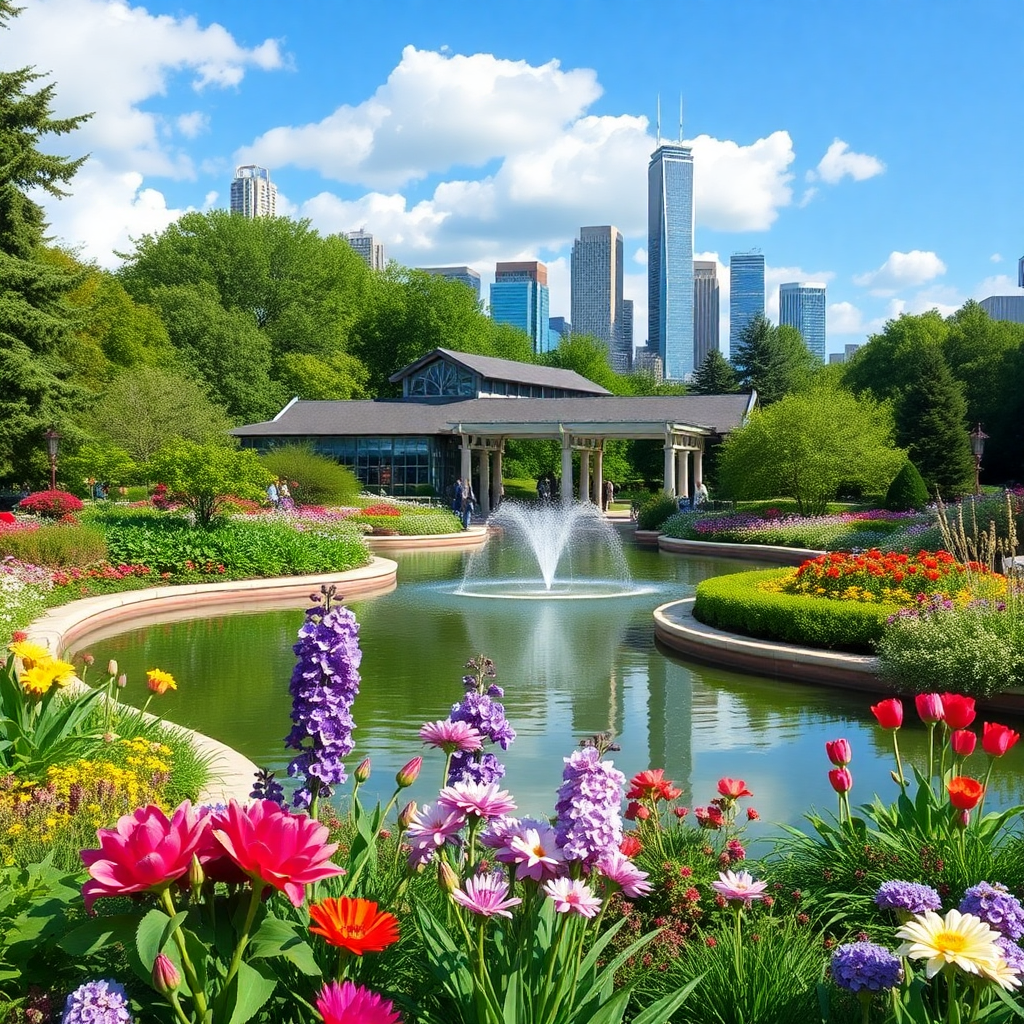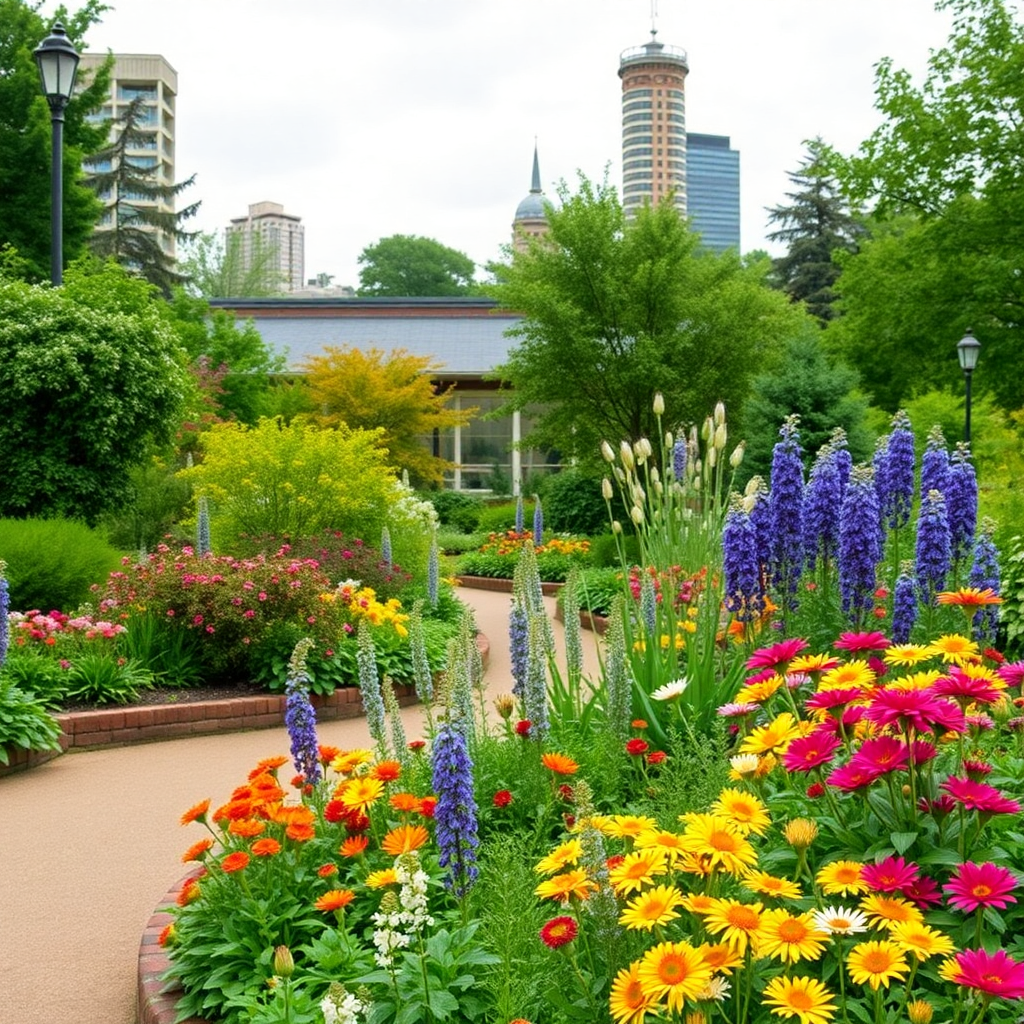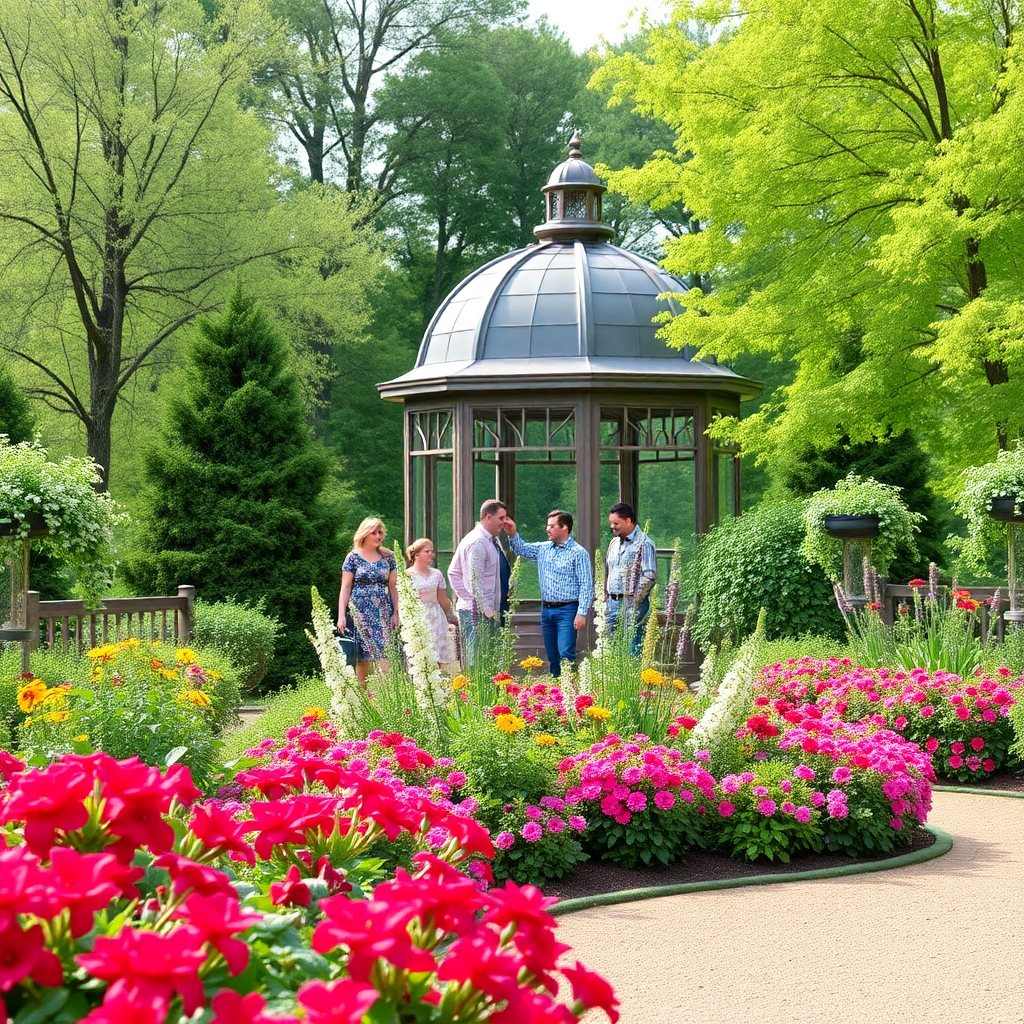Chicago Botanic Garden (Illinois): Breathtaking Garden Design Ideas to Transform Your Landscape

Did you know that 68% of homeowners struggle to create cohesive garden spaces despite spending an average of $500 annually on landscaping plants? The Chicago Botanic Garden stands as a living encyclopedia of garden design ideas, offering inspiration across 385 acres of meticulously curated landscapes. This Midwest horticultural jewel demonstrates how thoughtful garden design can transform ordinary spaces into extraordinary sanctuaries—regardless of your climate, space constraints, or gardening experience.
Information About Chicago Botanic Garden
The Chicago Botanic Garden presents an unparalleled collection of garden design ideas spread across 27 distinct gardens and four natural areas. This living museum showcases:
- The stunning Japanese Garden (Sansho-En) with three islands representing different garden design philosophies
- The English Walled Garden displaying six distinct garden styles within a single space
- The Waterfall Garden demonstrating how to incorporate water features into landscape designs
- The Rose Garden featuring disease-resistant cultivars ideal for Midwest gardens
- The Enabling Garden showcasing accessible gardening techniques for all abilities
- The Fruit & Vegetable Garden presenting productive landscape designs
- The Native Plant Garden highlighting regional flora in naturalistic settings
What sets the Chicago Botanic Garden apart is its commitment to demonstrating sustainable gardening landscaping practices across diverse environments, from formal gardens to prairie restorations. Each garden area serves as a living classroom for home gardeners, offering applicable garden design ideas for spaces of any size or style.
Timing
A comprehensive visit to the Chicago Botanic Garden typically requires 3-4 hours to explore the main gardens and collections. According to visitor surveys, most guests spend approximately 3.5 hours on site, though garden enthusiasts often dedicate a full day to study the various landscape designs in detail.
The garden is expansive, covering 385 acres with 27 distinct garden areas, making it significantly larger than the average botanical garden in the United States (which typically spans 150 acres). For comparison, visitors typically spend 2-3 hours at smaller botanical gardens, making the Chicago Botanic Garden’s recommended duration reflective of its exceptional scope and diversity.
Many visitors choose to return in different seasons to experience how the garden designs transform throughout the year—particularly valuable for Midwest gardeners looking to create four-season interest in their own landscapes.
Step-by-Step Instructions
Step 1: Begin at the Visitor Center and Garden View Café
Start your garden design journey at the Gateway Center, where you can orient yourself with a map and the day’s highlights. Take a moment to enjoy the view from the Garden View Café, which offers a panoramic vista of the Great Basin.
This vantage point demonstrates an important garden design principle: the value of a strong focal point. Notice how the gardens are arranged around the water feature, creating a sense of unity despite the diverse styles.
Pro tip: Take a photo of the map on your phone and mark the gardens that most interest you based on your own landscape needs. This will help you prioritize your visit.
Step 2: Explore the Model Railroad Garden
Next, visit the Model Railroad Garden to observe perfect examples of miniature landscape design. This garden demonstrates principles of scale and proportion that can be applied to any garden space.
Pay attention to how the designers have created miniature vignettes using dwarf conifers and small-leaved plants. These techniques can be adapted for container gardens or small yards.
Pro tip: Notice how the garden uses different textures and heights to create visual interest—a technique easily replicated in home gardens regardless of size.
Step 3: Visit the Japanese Garden (Sansho-En)
The Japanese Garden offers a masterclass in creating a sense of tranquility through thoughtful design. As you cross the zigzag bridge, observe how the designers use borrowed scenery and carefully placed elements to create a sense of journey.
This garden demonstrates the principle of “less is more” in garden design, with each plant and stone placed with intention.
Pro tip: Take note of how the Japanese Garden uses negative space (the areas without plants) to create balance—a powerful technique for avoiding overcrowded garden designs at home.
Step 4: Study the English Walled Garden
The English Walled Garden showcases six distinct garden styles within a single space, making it a perfect laboratory for garden design ideas. Move through each room to experience how different design approaches create varied emotional responses.
Pay special attention to the plant combinations and how they create harmony despite their diversity.
Pro tip: This garden is especially valuable for understanding how to create garden rooms in your own landscape—even a small space can be divided into distinct areas with different purposes.
Step 5: Conclude at the Plant Evaluation Gardens
Finish your visit at the Plant Evaluation Gardens, where the Chicago Botanic Garden tests plants for hardiness and performance in the Midwest climate.
This area provides practical information about which plants will thrive in your home garden, helping you avoid costly mistakes and plant failures.
Pro tip: Take photos of plant labels for varieties that perform well in conditions similar to your own garden. This research-based approach will improve your success rate with new plantings.
Technical and Artistic Information
The Chicago Botanic Garden was founded in 1972 by the Chicago Horticultural Society (established in 1890). It is located in Glencoe, Illinois, approximately 20 miles north of downtown Chicago, and encompasses 385 acres of gardens and natural areas.
The garden experiences a humid continental climate (USDA Hardiness Zone 5b), with four distinct seasons. Annual precipitation averages 36.9 inches, with significant snowfall in winter. The garden’s primary water resource is the 60-acre system of lakes that run through the property, supplemented by innovative stormwater management systems.
The mission of the Chicago Botanic Garden is to cultivate the power of plants to sustain and enrich life. Its strategic goals include plant conservation, education, and creating beautiful gardens that demonstrate sustainable landscape designs.
The garden features 27 distinct garden areas, including:
- The Japanese Garden (Sansho-En): A 17.5-acre traditional Japanese garden with three islands representing different garden styles: Island of Contemplation, Island of Evergreens, and Island of the Gods
- The English Walled Garden: Six garden rooms showcasing different English garden styles including cottage, vista, pergola, formal, informal, and courtyard designs
- The Rose Garden: 5,000 roses representing both historic and modern cultivars
- The Waterfall Garden: Demonstrating how to incorporate water features into garden designs
- The Enabling Garden: Showcasing accessible garden design ideas for people of all abilities
- The Fruit & Vegetable Garden: 4 acres of edible landscaping ideas
- The Native Plant Garden: Featuring plants indigenous to the Chicago region
- The Sensory Garden: Designed to engage all five senses
- The Circle Garden: A formal garden featuring seasonal displays
- The Aquatic Garden: Showcasing water plants and bog gardens
- The Dwarf Conifer Garden: Demonstrating the use of slow-growing conifers in landscape design
- The Landscape Gardens: Demonstrating how to combine trees, shrubs, and perennials in home landscapes
- The Plant Evaluation Gardens: Research gardens testing plant performance
The garden is distinguished by its world-class bonsai collection, extensive bulb plantings, and prairie restoration projects. It has received numerous awards for its landscape designs and plant collections.
Visitor amenities include:
- The Garden View Café and multiple seasonal food options
- Gift shop featuring garden-related merchandise
- The Regenstein Learning Campus with classrooms and teaching gardens
- The Daniel F. and Ada L. Rice Plant Conservation Science Center
- The Lenhardt Library with horticultural resources
- The Greenhouses and Nursery
- The Elizabeth Hubert Malott Japanese Garden
- Nine miles of walking paths
- Tram service for transportation around the grounds
- Event spaces for weddings, corporate events, and community gatherings
Annual events and festivals include:
- Orchid Show (February-March)
- Spring Flower Shows (March-May)
- Summer Evening Concerts (June-September)
- Farm Dinners (Summer)
- Wonderland Express (November-January)
- Night of 1,000 Jack-o’-Lanterns (October)
- Winter Lights (November-January)
The Chicago Botanic Garden is accessible via public transportation and has ample parking facilities. While general admission is free, there is a parking fee ($25-30 per car for non-members). Members receive free parking and other benefits.
The garden is governed by the Chicago Horticultural Society and managed by a professional staff of horticulturists, scientists, educators, and administrators. The horticulture team includes specialists in various plant groups, arboriculture, and ecological restoration. The garden employs approximately 400 staff members and benefits from the support of over 1,000 volunteers.
The Chicago Botanic Garden attracts over one million visitors annually, including local residents, tourists from across the United States and internationally, school groups, and professional horticulturists. It has a significant impact on the local community through educational programs, job training, and urban agriculture initiatives.

Healthy Alternatives to Recreational Trips
While the Chicago Botanic Garden offers exceptional garden design inspiration, consider these alternatives to complement your visit:
- Morton Arboretum (Lisle, IL): A 1,700-acre tree museum with excellent woodland garden design ideas, particularly valuable for understanding how to incorporate trees into home landscapes.
- Lurie Garden (Chicago, IL): A 2.5-acre rooftop garden in Millennium Park designed by Piet Oudolf, showcasing modern perennial design techniques in an urban setting.
- Garfield Park Conservatory (Chicago, IL): One of the largest conservatories in the United States, offering indoor garden design ideas and tropical plant displays.
- Anderson Japanese Gardens (Rockford, IL): An authentic Japanese garden providing additional inspiration for creating tranquil, contemplative spaces.
For families with children, consider these adaptations:
- Visit the Regenstein Learning Campus at the Chicago Botanic Garden, which offers family-friendly programming and interactive garden spaces.
- Create a garden scavenger hunt before your visit to engage younger visitors with specific garden design elements.
- Schedule your visit during one of the family-oriented events like the Model Railroad Garden exhibition or the Butterflies & Blooms exhibit.
- Bring sketchbooks and colored pencils to encourage children to document garden design ideas that interest them.
Introductory Suggestions
To maximize your garden design inspiration at the Chicago Botanic Garden:
- Research the seasonal highlights before your visit to experience the garden at its peak.
- Consider purchasing a membership if you plan to visit multiple times throughout the year to study seasonal changes in the garden designs.
- Take advantage of the free guided tours focused on specific garden topics, which are included with admission.
- Bring a camera and notebook to document garden design ideas that you might want to implement at home.
- Wear comfortable walking shoes and dress in layers, as exploring the various garden areas involves significant walking.
- Download the Chicago Botanic Garden app for self-guided tours focused on specific garden design themes.
- Visit during different seasons to understand how the garden maintains visual interest year-round—a crucial skill for Midwest gardeners.
- Attend one of the adult education classes on garden design if your schedule allows.
Common Mistakes to Avoid
When visiting the Chicago Botanic Garden for garden design inspiration, avoid these common mistakes:
- Trying to see everything in one visit: According to visitor surveys, 65% of first-time visitors report feeling overwhelmed by the garden’s size. Instead, focus on a few key areas that align with your personal garden design interests.
- Visiting only during peak summer months: While summer displays are impressive, spring and fall offer equally valuable design lessons. Winter visits reveal the important structural elements of garden design when flowers aren’t the focus.
- Neglecting to check the weather forecast: Midwest weather can be unpredictable—be prepared with appropriate clothing and protection from sun or rain.
- Missing the plant labels: The garden provides extensive plant identification information—take photos of labels for plants you might want to incorporate into your own garden.
- Overlooking the demonstration gardens: The Enabling Garden and Fruit & Vegetable Garden offer some of the most practical ideas for home gardeners.
- Forgetting to consider your own growing conditions: A plant that thrives in the carefully maintained garden might struggle in your yard unless you can provide similar conditions.
Visitor Encouragement Tips
To enhance your garden design exploration at the Chicago Botanic Garden:
- Join a guided walk or workshop: The garden offers specialized tours focused on garden design principles, plant selection, and seasonal highlights.
- Participate in hands-on demonstrations: The garden frequently hosts workshops on practical gardening techniques and landscape design.
- Engage with the garden staff: Horticulturists and gardeners are often working in the gardens and are happy to answer questions about specific plants or design choices.
- Visit the Plant Information Service: Staffed by knowledgeable volunteers, this resource can help you identify plants and understand their requirements.
- Attend a lecture or demonstration: The garden’s adult education program includes presentations on garden design topics throughout the year.
- Bring a refillable water bottle: Staying hydrated will help you remain comfortable during your exploration of the various garden areas.
- Consider using the garden’s tram service: This can help conserve energy for focusing on garden design ideas rather than walking long distances.
Conclusion
The Chicago Botanic Garden offers an unparalleled source of garden design ideas for Midwest gardeners, from formal landscapes to naturalistic plantings. Its diverse collection of gardens, research-based approach to plant selection, and educational resources provide endless inspiration for creating beautiful, sustainable outdoor spaces adapted to the challenging climate of the region.
We invite you to experience the Chicago Botanic Garden for yourself and discover how its landscape designs can transform your own garden. Share your favorite garden design discoveries in our comments section, or subscribe to our blog for seasonal updates and gardening tips inspired by this horticultural treasure.

Frequently Asked Questions
What is the best time of year to visit the Chicago Botanic Garden for garden design inspiration?
Each season offers unique design lessons. Spring showcases bulb and flowering tree combinations, summer highlights perennial gardens, fall demonstrates foliage color strategies, and winter reveals important structural elements of good garden design.
How can I adapt the garden design ideas I see to my small urban space?
Look for principles rather than exact replicas. Notice how plants are grouped by height, texture, and color; how paths create flow; and how focal points draw the eye. These concepts can be scaled down for any garden size.
Does the Chicago Botanic Garden offer classes on garden design?
Yes, the garden offers a comprehensive adult education program with courses on various aspects of garden design, plant selection, and maintenance techniques. Check their website for the current schedule.
Are there areas of the garden specifically designed for home gardeners?
Yes, the Plant Evaluation Gardens, Enabling Garden, and Fruit & Vegetable Garden were created specifically to demonstrate techniques and plant combinations that work well in residential settings.
How can I remember all the plants I see that I might want to use in my own garden?
Take photos of plant labels, which include the botanical name and often cultivation information. You can also use plant identification apps or consult with the Plant Information Service staff.
Can I bring my own plants to be identified?
Yes, the Plant Information Service can help identify plants and provide information about their cultivation requirements. You can bring samples or clear photos of the plants you want identified.
How do I know which plants will work in my specific garden conditions?
Pay special attention to the Plant Evaluation Gardens, which test plants for hardiness in the Midwest climate. Also, note the growing conditions (sun/shade, soil moisture) in areas where you see plants thriving.
